Contact
Tööstuse 43, Tallinn, Estonia
Store: +372 508 3309
Workshop: +372 5301 8568
Tähesaju tee 31, Tallinn Estonia
Store: +372 5885 7752
Workshop: +372 5301 6938
Info: +372 508 3309
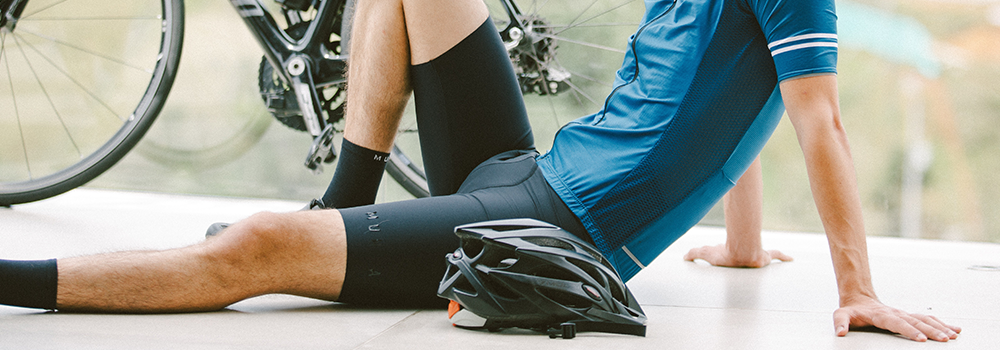
With the warm, dry spring weather comes the urge to get outside and enjoy the fresh air and sunshine after a long, dark winter. Now is the time to get out your two-wheeled friend and go for a ride. But before you set off, it’s worth checking that your bike is in good riding condition and that you have the necessary safety equipment.
The helmet plays the most important role. Although wearing a helmet is compulsory only for children under the age of 16, it is strongly recommended for all cyclists. Studies in Australia found that in 43% of fatal accidents involving light bike riders, the cause of death was head injury. This is why it is important to protect your head in particular when riding a light bike.
Just having a helmet is not enough. For a helmet to be useful and to protect you, several conditions must be met – the right size, the right type, for whom it is intended. To simplify the choice, we will outline what to keep in mind when choosing a suitable helmet.
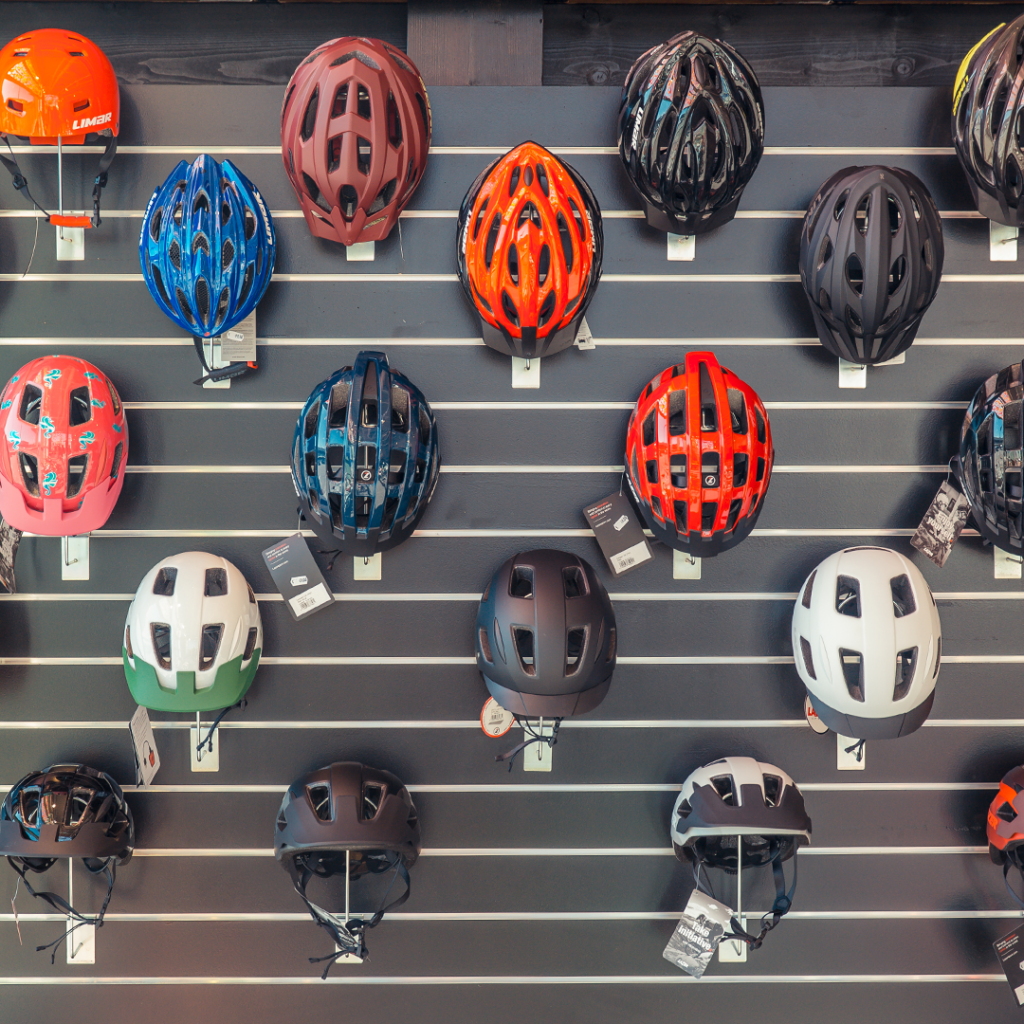
Whether you’re a beginner or an experienced rider, you need to choose the right helmet for your riding style to ensure a safe ride. An inappropriate helmet not only makes it uncomfortable, it can also be dangerous in the event of an accident. So choose the head protection that suits your driving habits for a safe and comfortable ride. You don’t need to wear a helmet designed for cycling for a leisurely ride around town every day. The three most common types are outlined below.
Off-road helmets are larger and tighter, covering the head more than other helmets. This is because off-road driving usually involves falling in all directions – forwards, backwards, sideways – as opposed to, for example, on the road, where the usual falls are forwards. Hence the helmet’s greater coverage, so that the head is protected as much as possible from shocks from all directions, especially the neck and the cheekbone.
The air vents in off-road vehicles are designed to provide cooling, especially at lower speeds. They have larger and fewer air vents, which means they also make more noise, especially when travelling faster.
Off-road hoods usually also have a visor or “beak” to protect against dust, dirt and sun, and insect protection in front of the air vents.
Most crashes on the road are in the forward direction. Helmets are therefore designed to provide protection specifically to the front and sides of the head. Road helmets are lighter, with more ventilation openings to provide cooling, especially at high speeds. Many road helmets are made of carbon fibre composite material, which is stronger and lighter than many plastics. Many of the latest designs aim to provide a helmet with carefully engineered air vents and lower air resistance so that your head doesn’t overheat during intense riding. Helmets usually do not come with a visor, or “nose” for a sunshade. On the road, the cyclist’s position is more forward, head down, and the visor simply obscures the cyclist’s view.
The lightest helmets can weigh even less than 200 grams, but they are also more expensive than usual. Great attention is paid to the aerodynamic properties of helmets to minimise the air barrier. Helmets are therefore much smoother and there are fewer air holes.
The world’s lightest helmet has been developed by Italian brand Limar. The Ultralight+ model has been in production for several years, but is still in high demand today due to its very light weight – M size weighs 175 g, L size 210 g. We also have the Limar Ultralight+ model, which still holds the record for the lightest helmet in the world!
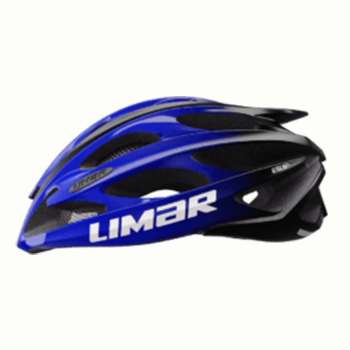
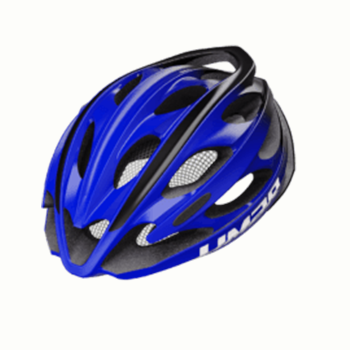
Limar has sponsored long-standing professional cycling teams such as Astana-Premiere Tech (from 2017) and Gazprom-RusVelo (from 2019). Both teams work together to develop helmets from design to testing. Ultralight+ helmets have played their part in helping team members to perform well. The Limar is also used in the Tour de France – always offering professional riders the best of the best, combining aerodynamics, ventilation, weight and safety.
Helmets designed for this purpose are much simpler in design and function. As the rider is travelling at a lower speed and not aiming for intense sporting activity, there is no need to worry about reducing air resistance in the helmet design, for example. They have a smaller number of air vents and a simpler, less sporty look.
Velomarket has a large selection of Nutcase helmets, designed specifically for everyday urban cycling. Nutcase helmets look very trendy and nice.
The helmet’s function is to protect the rider’s skull and brain in the event of an accident. A proper helmet will dissipate the force of the impact, saving the rider as effectively as possible from severe shock and trauma, even saving lives.
The helmet consists of three components:
The helmets are made of polystyrene foam, which, in the event of a strong impact, disperses the impact force inside the helmet. As the foam material itself is soft, there must be a strong outer shell around it. This shell is smooth, allowing the helmet to slide along the surface so it doesn’t get stuck. This prevents possible neck injuries. Most outer shells are made of plastic, but there are also more expensive helmets with outer shells made of carbon fibre composite material – stronger and lighter than plastic.
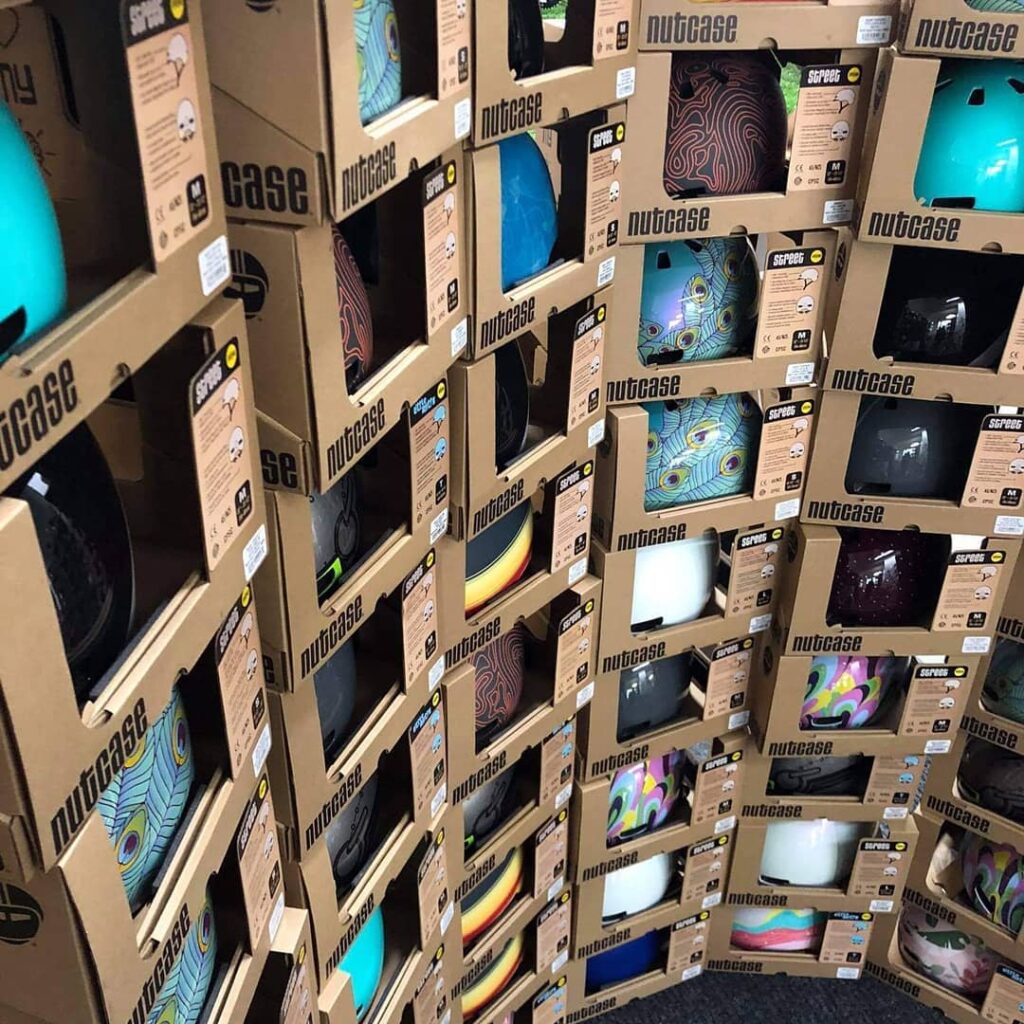
How can I check that my helmet meets the safety requirements? There is a sticker inside the helmet – uus a good quality helmet is definitely marked CE EN1078 marking. In addition, there are other factors that can influence the choice of helmet.
MIPS system
Accidents have shown that while helmet and head injuries appear to be minimal, the brain can still receive major concussions. The brain is not attached to the skull, so it can be shaken inside the skull and the risk of brain damage is higher. A new system has been developed to minimise the impact and shocks. MIPS (Multi-directional Impact Protection System).
MIPS is being used in an increasing number of new generation helmets. Attached to the helmet liner a “floppy” layer has been added to the lining of the helmet, which allows the helmet to move slightly relative to the head, absorbing the impact force further. Even though the MIPS layer moves only a few millimetres in any direction, its effect in preventing trauma and brain damage is significant.
The following minute-long video gives a snapshot of the MIPS system at work:
Developing a helmet is a big and comprehensive job. According to Audrey Yu, product manager for Lazer helmets, the new helmet will take at least a year to make. This time includes sketching, designing, 3D modelling, testing, making test helmets, certification, durability testing and graphic design. Only when all the above points have been met can we think about wider production. For safer and more effective (and more expensive) helmets, the time to manufacture increases to nearly two years.
The picture shows the helmet with MIPS system from the inside.

It is very important that the helmet is just the right size, because that is when the helmet stays firmly on your head in the event of an accident and can provide maximum protection. Here are some important points to make sure you follow when choosing a helmet.
Helmets are usually divided into three sizes:
However, the exact size varies between manufacturers within these ranges. For example, the M size may be different in reality for different brands. So it’s worth measuring the circumference of your head yourself to see what size range your measurements will be for one brand.
The measurement is taken from the widest part of the head, about two centimetres above the eyebrow line.
If you’re between two sizes, go for the smaller one. The bigger one is probably too big, but the smaller one stays on your head better. You could also try putting a cycling hat under your helmet if the helmet is really a bit bigger than it should be.
First, you need to get the helmet in the right position on your head. The head protection must not be too far forward or back. To do this, measure a two-finger gap above the eyebrows on the forehead – this is the height the front of the helmet should be.
The helmet must remain on the head without the aid of the lanyard strap, even if the head is tilted back and forth. The straps are there to prevent the helmet falling off your head in the event of an accident.
Many helmets have an internal adjustable fastening system that forms a lattice around the head and neck. It keeps the helmet more secure and comfortable on your head. However, it is important that the helmet itself fits the shape of your head, as the fastening system alone is not enough to provide proper protection. Helmets from all brands may not suit everyone. Italian helmets tend to be narrower, while American helmets are more rounded. It’s easy to take the circumference of your head, but you’ll only know if the helmet fits your head shape by trying it on.
When the fastening system is fully tightened, the jaw strap must be adjusted. There must be room for one finger between the closed strap and the chin, and the straps must form a V-shape around the ears. Both places must be easy to adjust and firmly in place.
Once the fasteners are properly adjusted and secured, open the mouth wide. If you feel that the helmet is pushing against your skull, it’s the right helmet for you. If the helmet doesn’t go against the headgear, tighten the strap more. That way, in the event of an accident, the helmet stays on.
Make sure the helmet doesn’t pinch or pinch anywhere. If this is the case, the helmet is not the right size or shape and should be replaced.
If you wear glasses, try the helmet on with them, because depending on the shape of the helmet, the glasses may not always fit under the helmet. Make sure that the helmet shell and attachment systems do not touch the frames.
To sum up – the formula for wearing a helmet is: 2V1
2 – when putting the helmet on, make sure it is two fingers above the eyebrow line.
V – the straps would be tightened so that the ear is between the two straps, or V-shape.
1 – one finger can fit between the attached strap and the chin (two fingers for small children).
Remember that no matter how well a helmet fits you, it’s no good if it’s not properly attached.
Here’s a short video from the Highways Agency that clearly shows how to wear a helmet and what to remember:
Children’s helmets are no different from adult helmets. However, there are some important points to pay attention to. Helmets for children must also be just right. A very dangerous mindset is that we leave room for growth. An ill-fitting helmet offers no protection. The helmet must be worn at the time and during the activity. There is no need to wear a helmet when children are doing something other than driving. In a play situation, the helmet can get stuck somewhere and pull the strap too tight under the chin, for example on a playground attraction or a tree branch. Children’s helmets often have a visor/shield to protect the eyes from the sun, air vents to cool the head. The helmets are adjustable in several ways. Some have straps with magnetic fasteners that are easier for the child to use. There’s a great range of colourful helmets for little ones and slightly bigger. Helmets for children aged six years and over have the same content as adult helmets.

It is essential to change your helmet after the first accident. A helmet that has been hit is no longer durable, as even a relatively minor impact will cause cracks in the helmet and make it unsafe. The shock absorbing inner cushioning layer is built for single “use” only. However, a more resistant material would make the helmet too heavy.
There is no set expiry date for helmets, but many manufacturers have a recommended period for replacing helmets. If the helmet’s colour has already faded or the strap is scratching, it’s long since out of use. While the cushioning material itself may not age, there are many other components in a helmet that can wear and degrade over time, such as adhesives and solvents.
Don’t throw or bang your helmet for nothing. A common view among manufacturers is that a helmet that is used several times a week should be replaced every four to five years, no matter how much the helmet has been impacted. The simple rule is to take care of your helmet – don’t throw it or bump it for nothing.
Clean the head guard regularly. Don’t use harsh cleaning products, just a plain soap and a soft cloth will do. The cushions can be removed and washed separately.
Keep the helmet in a cool, dry place. In warmer temperatures, different components of the helmet age more quickly and become brittle (e.g. glue). Do not wear a helmet with visible heat damage – “bubbling” material, cracks, discolouration or fading.
Don’t lend your helmet to others. You need to know exactly how the helmet has been used and whether it has received any major shocks. You need to be sure that the head protection is still operational.
Hopefully you got an overview of the different helmets and tips and choosing the most important companion is now much easier. Velomarket has helmets for sports and everyday rides for both big and small. Come visit us, we’d love to help!